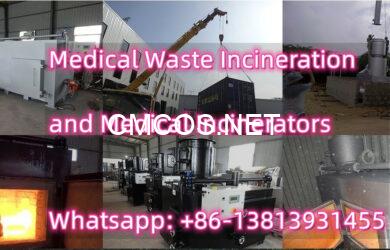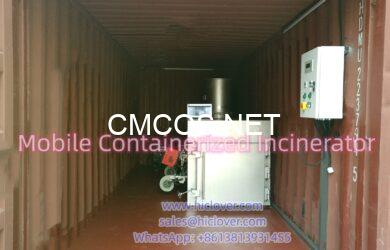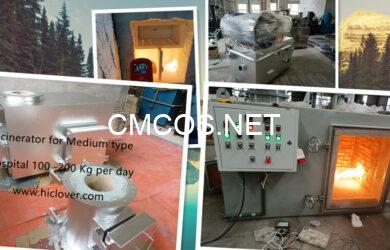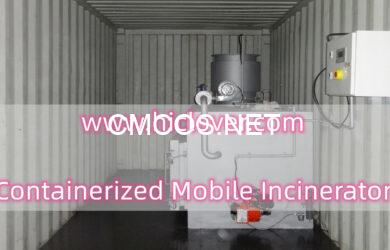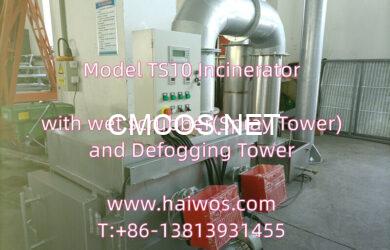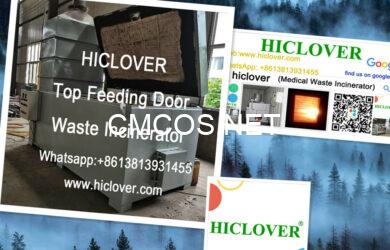Nanjing Clover Medical Technology Co.,Ltd. • Also consider provision for meeting international emission standards. Able to handle an average waste production of 100kg/day “• Minimum load capacity: 20 kg • Maximum load capacity: 40 kg • Nominal burning rate: 10-30 kg/hr (= 80- 240 kg range per 8hour day) The proposed incinerator units must be complete and include all of the key features listed below and all of the associated support services and interconnections The forecasted feedstock loads, and daily loading rates are generally summarized as: • Mixed general, clinical and incinerable hazardous wastes with a wide range of calorific values and densities. The wastes will consist of 100% biomedical wastes. • Wastes either small enough to fit within a 60 litre waste sack or broken up or shredded to less than 300mm in size. • Operation on a daytime shift basis, 5 days per week. • An 8 hour daily operating cycle of ash removal, pre-heat and burn with continuous loading if required. The automated burn completion Principle Medical Waste Incineration Treatment Burn Rate Average 1000-1500 kg/hour Feed Capacity Average 6000kg/feeding Control Mode PLC(Programmable Logic Controller Incinerator) Combustion Chamber 4800Liter Internal Dimensions 400*120*100 cm The Incinerator units shall be designed to last in operation in a tropical environment for a minimum period of 10 years if the specified maintenance schedule is followed. All metal surfaces (except combustion chamber internal fittings) shall be either galvanized, enameled, painted or otherwise treated against atmospheric and process induced corrosion The incinerator combustion chamber(s) should be designed for easy maintenance of all internal parts including the refractory and insulation. Materials used in the individual parts of the incinerator shall be heat resistance and also be protected against oxidation, corrosion, etc.o C.E = (CO2 X 100) / (%CO2 +%CO) incinerator price incinerator for medical waste Suitably designed pollution control devices such as scrubbers, filters or electrostatic precipitators, shall be installed/retrofitted with the incinerator to achieve emission limits.” “Each unit shall include a complete vertical exhaust and stack system, including the following features: • Steel construction. The proposed incinerators shall be able to be completely packed into a series of 20ft export standard sea containers. • Refractory lining in the lower section. • The exit height of the stack shall be not less than a range of 3-12 metres above ground level depending on the capacity of the incinerator unit. The incinerator shell shall be made of mild steel with an adequate thickness for small units of between 3-6mm and larger units 5-10 mm depending on the construction part and painted externally with heat resistant aluminum paint suitable to withstand 250° C. The outside surface temperature of the incinerator casing should not exceed 50° C above ambient temperature and shall include a safety mesh around all hot surfaces. Cold face refractory lining of calcium silicate or superior material, minimum thickness 100 mm. The incinerator units shall include a temperature based electronic combustion control system that utilizes temperature and other data to inform automated or programmed cycling through the standard burn cycle: pre-heat, burn with waste addition, burn completion, cool-down. The system shall be capable of varying auxiliary fuel and air supply in both combustion chambers to achieve optimum combustion conditions. As far as practicable, the incinerator shall be of a plug and play type for ease of installation and commissioning in remote locations. “The control system shall have a separate push button-based work station, which shall be located adjacent to the loading bay and protected from weather and impact damage. The system shall allow for rapid and straightforward intervention by the operator if the automatic system is not achieving the desired results during a burn cycle. e. achieve a Total Organic Carbon (TOC) content in the slag and bottom ashes of less than 3%. …

